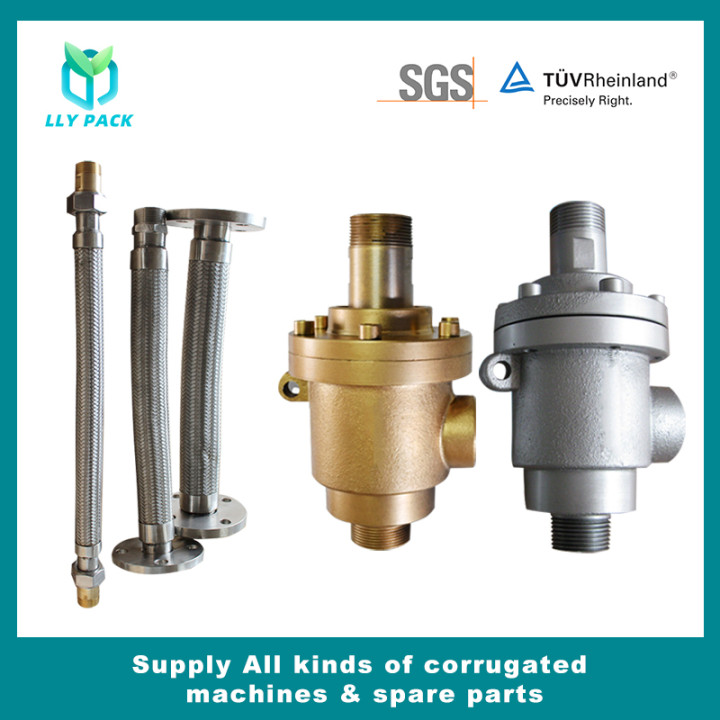Corrugated cartons flexo water-based inks are flammable, explosive, volatile, and toxic solvents that are non-corrosive and environment-friendly because they do not contain benzenes, esters, ketones, etc. . It has quick-drying properties and can meet the needs of printing and high-speed printing of paper substrates. It has the advantages of low viscosity, good fluidity, good ink transfer performance, and the ability to transfer ink with a very simple anilox roller ink transfer system. Therefore, in the past 10 years, rapid development and application have been achieved in flexo printing and paper product printing. In particular, printing in the corrugated box industry is mainly based on flexo-based water-based inks (hereinafter referred to as ink and wash). However, due to the differences in the selection of ink-making process and materials quality and the different types of testing instruments used by various domestic ink-jet companies, the specific quality parameters of ink-and-wash inks developed by various companies are also different. As a result, the quality of the ink on the market varies, resulting in problems such as unstable quality, poor thixotropy, insufficient color saturation, poor drying, and poor wear resistance, as well as process problems. Giving the user control of print quality during the printing process increases the difficulty. Therefore, it is necessary to formulate a unified national standard for ink and wash to meet various needs.
The formulation of ink-and-wash standards can consider the feasibility of implementation of the standards in terms of the production, use, inspection, arbitration, circulation custody and warehousing of ink and wash. After the standards have been formulated, they can play the role of the following aspects, and make subsequent regulations for each specific aspect of ink-ink standardization.
(Level 1) Formulation of Ink and Wash Standards
Safeguarding the legitimate rights and interests of all parties
As far as the problems of ink printing in the printing process are concerned, the ink and wash suppliers have adopted specialized technical personnel for large customers to solve the problems by transferring ink to the factory. However, many of the quality problems and technological problems in the use of small customers are left to the carton factory. The printing factory handles it by itself. If the ink and ink standards are available, the legitimate interests of small users can be guaranteed.
It can ensure the stability of ink manufacturing quality, and prevent and reduce some unnecessary losses in the production, use, inspection and storage of ink.
Producers and users have a basis for judgment in the event of a dispute. There are also grounds for inspection and arbitration by relevant agencies.
After nearly 10 years of development, domestic ink painting has gradually matured. Formulating standards can further promote and promote the improvement of the quality of ink and wash in China.
It is conducive to the harmonization of inspection methods and improvement of the production, use, inspection, storage, transportation, and storage of ink-ink painting in China.
(Level 1) Range, Project and Content of Ink Standardization
The scope, items, and content of the standardization of ink painting should include the following performance indicators. Because these indicators have a direct impact on the printing of corrugated boxes, and can reflect the status of the ink.
(Grade 2) Quality of Ink Materials
The technical quality requirements of the main materials of ink and wash have a direct impact on the quality of ink and wash:
Binder (various resins):
The resins available for use in inks include nitrocellulose, acrylic resins, polyketone resins, epoxy resins, alkyd resins, shellac, and rosin resins. Different resins have a greater impact on the performance of inks, so specific quality requirements and regulations for resins used in inks of different models (ie, different grades) should be addressed.
Color quality requirements
The colorant is a coloring matter of the ink and is required to have resistance, such as light resistance, high temperature resistance, weather resistance, dry friction resistance, bright color and strong coloring power. If the chromatogram is complete, the color concentration is high, and high hiding power is easily achieved. The quality of the ink and the requirements for the color of the ink should also be stipulated.
Solvents and Additives Quality Requirements
The solvent of water ink is water, and the auxiliary agents mainly include stabilizers, defoamers, wetting and dispersing agents, pH adjusters, slow drying agents, desiccants, slip agents, etc., and can be attached to the standard after the attachment is used. User reference.
(secondary) color and tinting power
The same type of ink should maintain its hue stability, even if the printed products in different batches still maintain a certain printing color. When printing the first batch of products, the printing samples are generally collected for archiving so that the same product can be checked later. Coloring power refers to the size of an ink that affects the degree of change in another ink color. When a spot color ink is dispensed, when the hue or tinting strength of one of the original inks changes, the color of the spot color ink that is called out changes. Strong coloring, can ensure that the imprinting has a high hiding power, coloring power should be ≥97%.
(secondary) viscosity
The viscosity of the ink is the size of the cohesive force of the flexo-printing water-based ink, and is one of the most important control indicators of the ink. The ink viscosity should also be clearly defined in the ink standard. In the printing process, the ink has a certain viscosity is necessary to maintain the normal transfer, transfer of ink. Because the viscosity determines the ink transfer performance, the ink transfer system affects the transfer of ink, and the fastness of the print, the gloss of the color, and the stability of the ink transfer amount, the viscosity of the high-grade ink is generally controlled at about 20±5 seconds. The difference will cause different shades of printing color, too much viscosity will cause the following usage defects:
Ink transfer and transfer are difficult because the speed of the flexo printer is generally very fast. Especially when the first color is printed to the second color, the interval is only a few seconds to a few tenths of a second. If the viscosity of the ink is large, it will be difficult to separate. , slow transfer, dry slowly.
It can easily cause the paper to pull and remove powder, and some cause peeling.
Difficult to fill in the cell site, while the scraper is also difficult to smooth off the ink part of the wall, practice has proved that under the same conditions, the viscosity of the ink layer split state is more favorable than the viscosity of the ink transfer, so flexo version The ink generally has a small viscosity, and the most suitable viscosity range for printing is preferably controlled between 17 and 25 seconds. However, the viscosity of ink cannot be too small, otherwise it will easily cause the ink in the dots at the time of imprinting to be easily deformed, and the dots will expand, which will deteriorate the reproducibility of the graphic and graphic texts. In severe cases, it will cause the ink to emulsify, or make it unable to transfer and transfer normally. And gradually accumulate pigments on the anilox roll and printing plate. When the accumulation reaches a certain level, it will cause paste plate.
(Secondary) PH
PH value of the ink viscosity: the ink is generally weakly alkaline, printing PH value control is very important, when the PH value is higher than 9.5, the alkali is too strong, the ink viscosity decreases, the drying speed slows, water resistance Poor performance. When the PH value is lower than 8.5, the alkalinity is too weak, the viscosity of the ink will increase, and the transferability will be deteriorated. The ink will be easy to dry, and the printing plate and the anilox roller will be easily jammed, causing the layout of the plate to be dirty, and the paste plate failure will occur. bubble. PH mainly relies on ammonia compounds to maintain, but due to the volatilization of ammonia during the printing process, in order to maintain the stability of ink and ink performance, it is necessary to avoid the leakage of ammonia as much as possible. In production practice, many users take regular and quantitative measures. Add stabilizer to the ink tank to solve. The normal range of PH value in the proposed standard is 8.5 to 9.5. The printing performance of the ink is better at this time, and the printing quality is stable. The influence of PH on the printability of the ink is mainly manifested in both the viscosity and the drying property of the ink. In the actual production process, the PH value of the ink on the machine can be adjusted or controlled between 8.0 and 9.5, depending on the product and the temperature.










